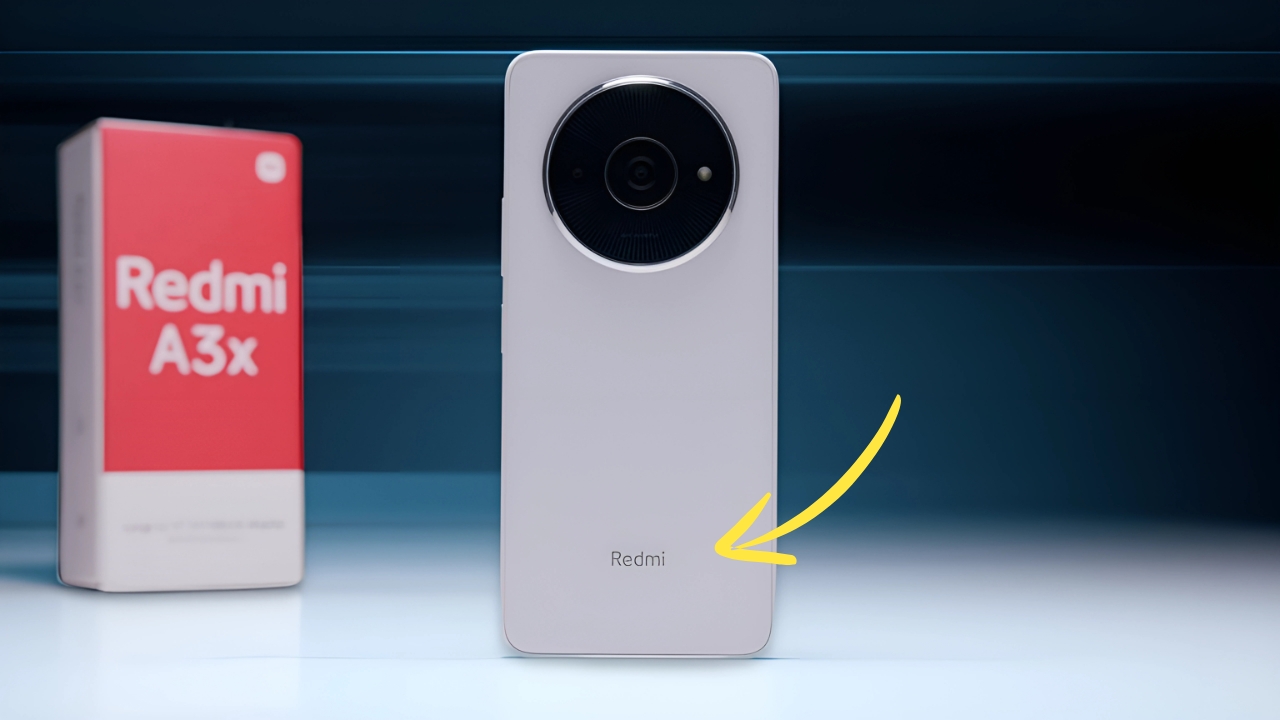Redmi A3x Smartphone: The democratization of smartphone technology continues to push entry-level price points lower while maintaining increasingly acceptable user experiences.
The Redmi A3x represents perhaps the most aggressive implementation of this philosophy, attempting to deliver a complete Android experience at the previously unthinkable price point of approximately ₹6,499 ($77).
Having used this device as a tertiary phone for basic tasks over the past ten days, I’ve developed clear impressions about where it succeeds in delivering essential functionality and where unavoidable compromises emerge at this extreme budget positioning.
Redmi A3x Smartphone: Market Context: Understanding the A3x’s Purpose
To properly evaluate the A3x, one must first understand its distinct positioning within both Xiaomi’s diverse lineup and the broader smartphone ecosystem.
As the entry point to the company’s most affordable series, this device targets first-time smartphone adopters transitioning from feature phones, elderly users with basic communication needs, or those seeking an emergency backup device.
This positioning creates fundamentally different expectations than those applied to mainstream budget or mid-range offerings.
The central question becomes not how the A3x compares to devices costing several times more, but rather whether it delivers the essential smartphone experience at its unprecedented price point – a more nuanced evaluation than simple specification comparisons might suggest.
Design Approach: Honest Simplicity
The A3x makes no pretense of premium materials or construction, embracing plastic throughout while incorporating design elements that enhance both appearance and functionality.
The “Arctic Blue” variant I tested features a textured back panel with a subtle pattern that both adds visual interest and provides improved grip compared to smooth alternatives.
This texture effectively resists fingerprints – a practical consideration often overlooked in glossy implementations.
At 9.1mm thick and weighing 178 grams, the device feels substantial without excessive bulk. The slightly rounded frame improves hand-feel during extended use, while the rear-mounted fingerprint sensor provides reasonably reliable authentication given the price constraints.
The inclusion of a 3.5mm headphone jack acknowledges the likely usage patterns of the target demographic, many of whom may still rely on wired audio accessories.
The front design adopts a waterdrop notch housing the selfie camera, with bezels that appear moderately thick by current standards but remain proportional to the device’s positioning.
The display’s flat implementation enhances usability during typing and navigation, while simplifying case options – a consideration for buyers likely to protect their investment.
Display Experience: Functional Basics
The 6.71-inch LCD panel delivers HD+ resolution (1650 × 720), creating a display experience focused on fundamental functionality rather than excellence.
Text appears reasonably sharp during normal viewing distances though reveals pixelation upon closer inspection.
Brightness reaches approximately 450 nits – sufficient for indoor use but challenging under direct sunlight.
Color reproduction leans toward cooler tones in default settings, though can be adjusted through basic temperature controls in the settings menu.
The standard 60Hz refresh rate reflects expected limitations at this price point, creating a noticeably less fluid scrolling experience than higher-refresh alternatives.
Touch response proves adequate for basic navigation and typing, though exhibits occasional missed inputs during faster interactions – likely reflecting hardware limitations in the digitizer rather than software issues.
Viewing angles demonstrate expected color shift when viewed off-axis, though content remains visible through reasonable angles for personal use.
The display’s overall quality won’t impress anyone familiar with higher-tier devices, yet delivers essential functionality for content consumption, messaging, and basic web browsing – aligning appropriately with its intended purpose and price point.
Performance Reality: Managed Expectations
Powered by MediaTek’s Helio G36 processor paired with 3GB RAM and 64GB expandable storage, the A3x offers performance calibrated for essential tasks rather than versatility or future-proofing.
This hardware configuration creates a device capable of handling basic communications, social media consumption, and simple utility applications with acceptable, if not fluid, responsiveness.
In practical use, the device launches and switches between lightweight applications with moderate delays that never quite reach frustrating levels when expectations are appropriately set.
System navigation demonstrates occasional stutters during animation transitions, though rarely impedes actual functionality.
Heavier applications like Facebook or YouTube require noticeably longer loading times than more powerful devices, with occasional frame drops during scrolling through media-rich feeds.
Gaming capabilities remain strictly limited to the most basic titles, with even moderately demanding games like Subway Surfers exhibiting frame rate inconsistencies.
This limitation feels entirely appropriate given the device’s positioning and target audience, who likely prioritize communication functionality over entertainment capabilities.
The 5000mAh battery represents perhaps the A3x’s most impressive specification, delivering exceptional endurance that routinely exceeds two days of typical usage.
This longevity partially compensates for the modest 10W charging, which requires approximately 3 hours for a full recharge – a reasonable tradeoff emphasizing endurance over rapid recharging at this price point.
Camera Capability: Fundamental Documentation
The camera system combines an 8MP primary sensor with an unspecified secondary lens primarily serving depth-sensing functions.
This modest hardware creates a photography experience focused on basic documentation rather than artistic expression or social media showcasing.
In favorable lighting, the main camera captures usable images with reasonable color reproduction, though lacking the detail and dynamic range found in higher-resolution implementations.
Indoor lighting significantly reduces image quality, with noticeable noise and smudged details even under moderately well-lit conditions.
Low-light photography produces expected limitations, with significant noise and limited detail retention.
The 5MP front-facing camera delivers functional selfies in good lighting, adequate for basic video calls and occasional social sharing, though lacking the resolution for significant cropping or enhancement.
Video recording capabilities remain limited to 1080p at 30fps, producing acceptable footage for casual documentation in favorable conditions.
These imaging limitations feel entirely appropriate given the price positioning, offering functional photography for utilitarian purposes without attempting capabilities beyond what the hardware could reasonably deliver.
Software Reality: Streamlined Experience
MIUI 14 based on Android 13 Go Edition represents Xiaomi’s adaptation of Google’s lightweight operating system variant designed specifically for entry-level hardware.
This implementation focuses on essential functionality while reducing system overhead through simplified animations and background processes.
The interface offers basic customization options without overwhelming complexity, while preinstalled applications remain largely limited to essential Google services and core utilities.
System animations appear deliberately simplified to maintain functional responsiveness despite hardware limitations, creating an experience that prioritizes usability over visual flourish.
Storage management features demonstrate particular thoughtfulness, with tools designed to maximize available space through efficient caching and file compression – important considerations given the limited internal capacity and likely usage patterns.
Redmi A3x Smartphone: Defined Purpose
The Redmi A3x ultimately succeeds by embracing a clearly defined purpose without overreaching its capabilities.
Rather than attempting to compete across arbitrary specification comparisons with more expensive devices, it delivers the essential smartphone experience at a price point accessible to previously underserved demographics.
For first-time smartphone users, elderly individuals with basic communication needs, or those seeking an emergency backup device, the A3x offers a compelling proposition focused on core functionality without unnecessary complications or expense.
In recognizing and embracing these specific use cases rather than attempting universal appeal, Xiaomi has created a device that meaningfully expands smartphone accessibility beyond conventional market segments.





